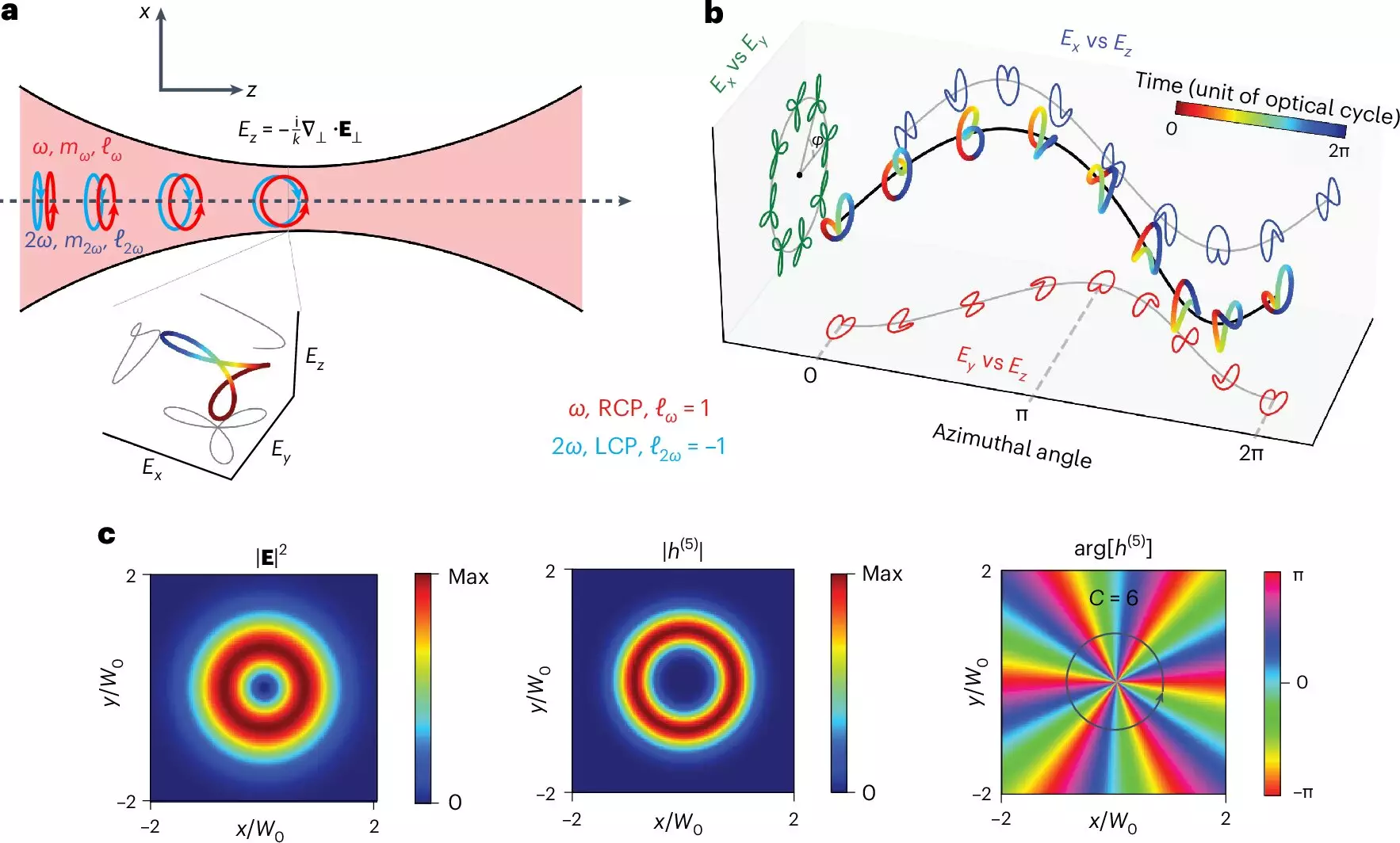The advancement of scientific techniques often leads to remarkable breakthroughs, particularly in fields as critical as pharmaceuticals. A recent study published in *Nature Photonics* illustrates this with significant strides in the measurement of chirality—a crucial property in molecular science. Researchers from King’s College London and the Max Born Institute have developed an innovative light structure called a “chiral vortex” that could transform the way chirality is detected in drug development, improving safety and efficacy in the pharmaceutical industry.
Chirality refers to the characteristic of a molecule that makes it non-superimposable on its mirror image, akin to human hands. This property plays a vital role in molecular interactions, particularly in the context of pharmacology, where left-handed and right-handed versions of a drug can have vastly different biological effects. For instance, the notorious thalidomide saga of the 1950s serves as a grave reminder of how detrimental the wrong chiral form can be. The drug, which was prescribed to pregnant women, resulted in serious birth defects due to the harmful effects of the right-handed variant. This pivotal historical lesson underscores the necessity for stringent chirality assessment in drug discovery and development, making advancements in detection techniques paramount.
The research led by the collaborative teams explored a groundbreaking approach that harnesses the behavior of light itself in order to measure chirality more effectively. Traditional optical methods for chirality detection, though popular for their non-invasive qualities, are challenged by limitations such as the requirement for large sample sizes, posing financial constraints and logistical burdens. The newly devised “chiral vortex” transcends these challenges through an intricate structure of light, where the electric field traces out a chiral curve that varies spatially, forming a vortex pattern.
This dynamic interaction between chiral molecules and the chiral vortex generates a distinct emission of photons, via a phenomenon known as high-harmonic generation. This innovative method not only enhances the sensitivity of chirality detection but also enables researchers to discern minute differences in the ratios of chirality, such as identifying a sample that is 49% right-handed and 51% left-handed—an imbalance that can have monumental implications, as seen in the thalidomide case.
One of the most compelling advantages of this new method is its robustness against the common experimental pitfalls that often plague chirality detection. Fluctuations in light intensity, which can lead to unreliable results, are mitigated, thus empowering a broader range of researchers to perform chirality experiments with confidence. As noted by Dr. Nicola Mayer, a postdoctoral researcher involved in the study, the chiral vortex technique allows for more nuanced interpretations of handedness in dilute samples, paving the way for potentially life-saving advancements in drug safety testing.
Furthermore, the research posits that this technique could also substantially enhance our understanding of electron dynamics within molecules. By analyzing how electrons behave during chirality interactions, scientists may not only improve molecular design but also influence chemical reactions through controlled light application.
The implications of chiral vortex technology extend beyond pharmaceuticals and into the realm of quantum computing. The ability to imprint handedness onto quantum bits may lead to a remarkable boost in the processing capabilities of quantum computers. As the field of quantum technology continues to evolve, the integration of chirality into quantum information may represent a revolutionary leap, enhancing the capacity for data storage and processing in unprecedented ways.
The exploration of chiral vortices as a method for chirality measurement signifies a vital step forward in various scientific fields, particularly in drug discovery and quantum computing. By enhancing the ability to accurately and robustly detect chirality, this groundbreaking research contributes not only to safer pharmaceuticals but also to advancements in numerous areas of chemistry and physics. The convergence of light structure and molecular interactions heralds a new era in scientific innovation, with the potential to reshape our understanding and manipulation of matter at the molecular level. As researchers continue to explore these new frontiers, the promise of improved safety, efficiency, and clarity in both medicine and technology shines brightly on the horizon.

